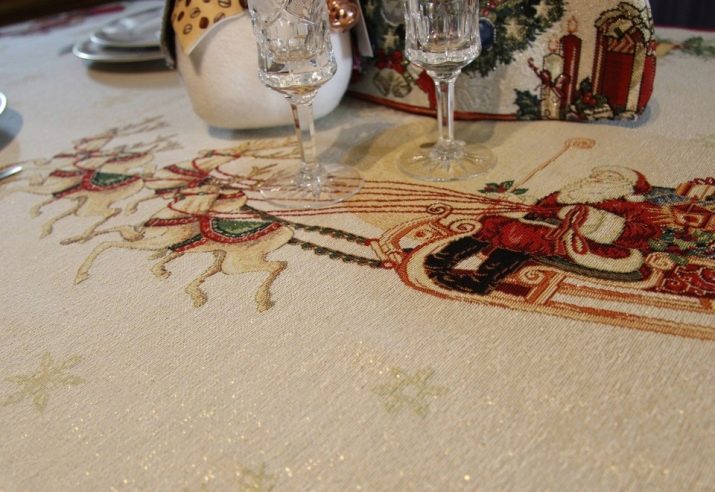How and how to remove stains on the tablecloth?
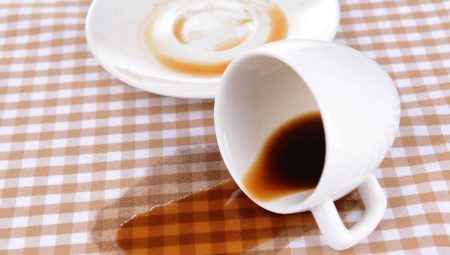
A tablecloth is a thing that gets dirty very often. Stains of various origins can appear on it. Some of them can be very difficult to fight, due to which the appearance of the material deteriorates noticeably. In today's article, we will find out how and how you can effectively remove various stains on the tablecloth.

How to remove old yellow stains?
If the tablecloth was not promptly processed to remove various stains, then it will be much more difficult to deal with them in the future.
It is possible to remove old yellow or other contaminants at home, but for this you have to resort to all sorts of tricks.
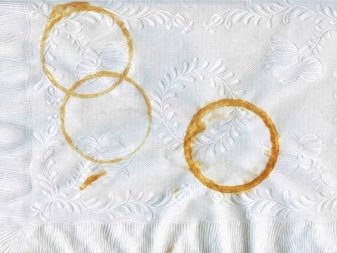

Greasy stains quickly eat into the fibers of the tablecloths. To deal with them, people have to look for quality products that can remove such traces of dirt and do not damage the structure of materials. Let's consider several effective methods of self-removal of old yellow spots, "flaunting" on tablecloths.
- Potato starch is very effective, pre-mixed with water to form a mushy mixture. This tool removes yellowed stains from a white tablecloth very well. The mixture must be left on the product to dry for several hours. After that, the formed crust is simply removed from the tablecloth, and the contaminated place is wiped with a swab dipped in refined gasoline. It will be possible to achieve an enhancement of the effect by using a piece of stale brown bread - they simply additionally wipe the traces with it.
- You can also pre-treat a stained tablecloth in a clean dish using starch. It just needs to be poured onto dirty tracks, then wait a little (a few minutes will suffice) and shake it off. Next, the product is washed using a dishwashing gel.
- Often there are situations in which nothing helps to get rid of old yellow spots. Don't panic. It makes sense to try the digestion method. For these purposes, the thing is sent to a large container, the optimal volume of water is poured into it, laundry soap, hydrogen peroxide and soda are added. The listed funds always demonstrate very high performance.
- Many housewives are interested in what else can be added when boiling to rid the tablecloth of old yellow spots? Oddly enough, silicate glue and washing powder are suitable for these purposes. The combination of these components is able to return the linen tablecloth to its original and absolutely clean look. In such a solution, the thing must be kept for about 30 minutes, after which it should be washed in the standard mode.
- Old yellow spots can be removed from almost any fiber type, if you first resort to soaking the product, and then to treat the damaged areas with laundry soap. Next, the tablecloth should be placed in a bag and tied tightly. After 30 minutes, the product is allowed to be transferred to the wash in the usual manner.

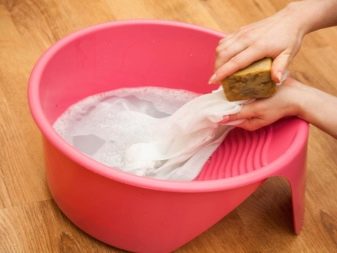
You can whiten the tablecloth from old yellow spots without boiling or folk remedies. It is possible to use special store products.

They should be used exclusively in accordance with the instructions so as not to harm the product.
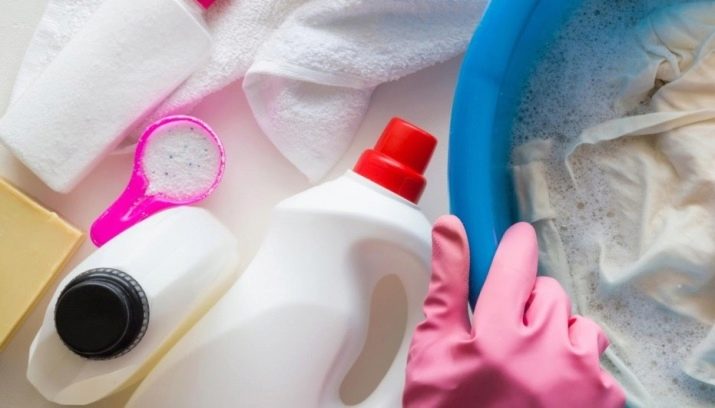
Before that, it is advisable to determine in what condition the fibers of the tablecloth are.

How to remove other traces?
Of course, the tablecloth can suffer not only from old and stubborn stains. Very often this thing has ugly marks from spilled juice, tea, coffee and other popular drinks. Moreover, wax stains often appear on the tablecloth, which especially frighten housewives. Let's find out how you can remove other dirty stains left on the once clean and light tablecloth.
Juice
After some holiday, on the tablecloth, you can very often see the remnants of the juice accidentally spilled by someone.

We will find out how it is possible to get rid of such stains.
- If the canvas for the table is made of artificial and colorful fabric, then it will be possible to remove stains from juice from it by means of a solution made up of 1 tsp. hot water, ½ tsp. ammonia, ½ tsp. hydrogen peroxide.
- The contaminated area will need to be treated with soda gruel, after which the product should be washed.
- If the tablecloth is made of cotton or linen, it can be sent to soak in milk for about 1 hour. After this procedure, the item will need to be sent to the automatic machine for further washing.
- If the juice stain is still fresh, then you can take a lemon, cut it into 2 halves, and then rub the stained area on the tablecloth with it.
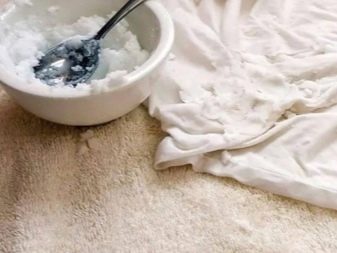
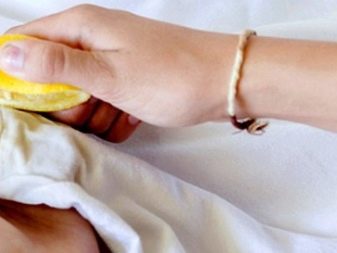
Beer
After a feast, beer traces can also remain on the fabric. It is also possible to get rid of them. Let's see how this can be done.
- You should take ammonia. They should carefully wipe the contaminated areas on the cloth.
- Beer leftovers can be effectively removed by a combination of 1 tsp. soda and 1 liter of liquid.
- It will be possible to correct the situation by means of a soap mixture. To prepare it, you will need to take 5 g of soap, 0.5 l. soda, 1 glass of water. You should immerse a tablecloth in the prepared mixture, hold it like this for a day, and then wash it using the traditional method.
- If, after the cleaning procedures, there are still bluish or slightly purple marks on the tablecloth, the cloth can be boiled with hydrogen peroxide.


Coffee and tea
Tea or coffee stains on the tablecloth are considered tough to remove. This is especially true when a freshly brewed drink is poured onto the fabric.
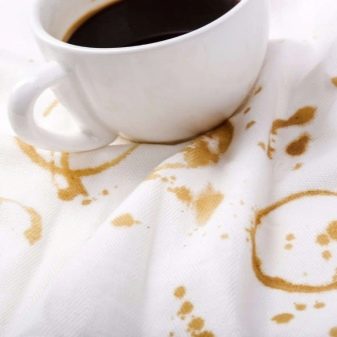
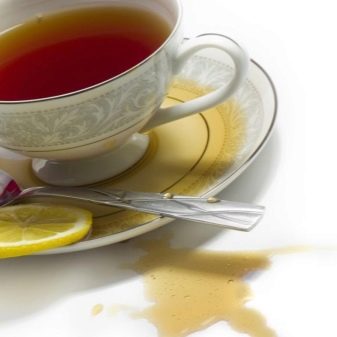
Before attempting to successfully bleach the material, the stain will need to be smeared with warm glycerin mixed with fine salt. The next step will require an intensive wash with oxygen bleach.
Likewise, it will be possible to remove the stains that remain from the tea leaves.
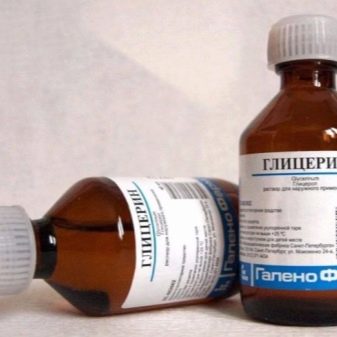
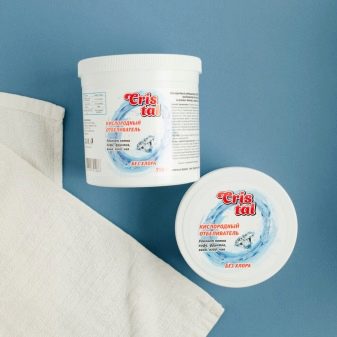
Fat
Very often, oily stains and various oil marks appear on the tablecloths. You should not be afraid of such contamination, because you can get rid of them too!
A greasy spot on the material must first be covered with chalk, salt and soda. After a while, the product needs to be shaken and the same treatment should be carried out again if there are any doubts about its initial effectiveness. The next step is washing with detergents such as Fairy and rinsing in warm water.
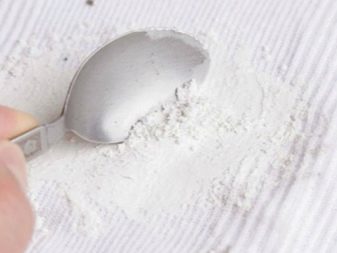
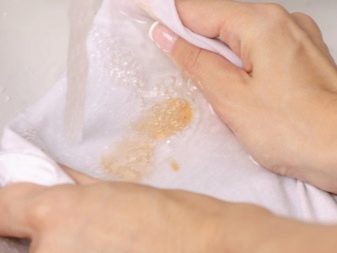
Wax
If there are drops of wax on the tablecloth, do not hope that they can be removed very quickly and easily.
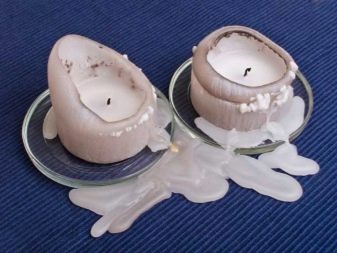
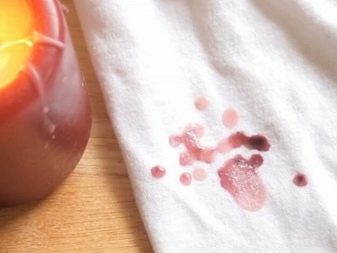
Large nodules will need to be cut very carefully with an ordinary serving knife. Particles adhering to woven fibers can be removed with paper towels or paper towels. They are simply applied from 2 sides, after which they are heated by means of an iron. The rest of the candles should be completely absorbed.
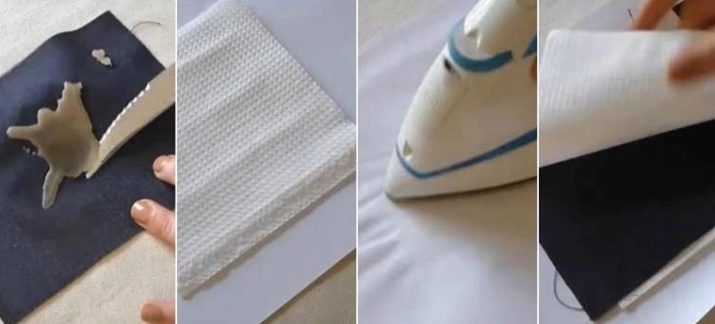
Tomato and beetroot
These enzymes are among the most persistent in nature. Stains left over from tomato paste, ketchup or beets can hopelessly ruin the appearance of the once neat and attractive fabric. If such contamination appears, it makes sense to shake them off the material as soon as possible, and then wash the tablecloth in a soap-based solution. Most likely, traces of such products will not completely disappear, then they will need to be sprinkled with citric acid, and then washed again at least 3 times.
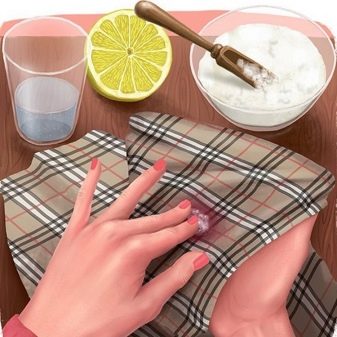
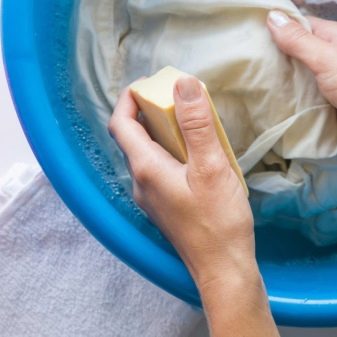
Wine
After meals, stains of white or red wine are among the most common on the tablecloth. It is generally accepted that getting rid of them causes a lot of difficulties.
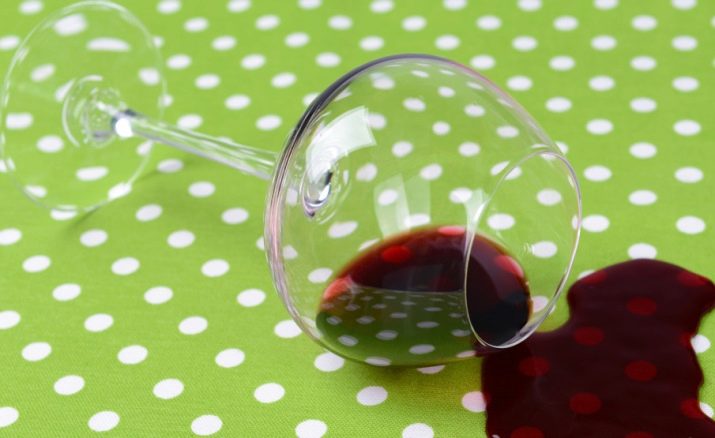
In fact, it is possible and necessary to deal with wine stains. Let's see how this can be done.
- You can prepare an effective remedy from ingredients such as glycerin and raw egg yolk. You will need to wipe the traces left over from the wine with the prepared solution.
- The second method of dealing with wine stains is no less effective. In accordance with it, you need to mix ½ tsp. baking soda and soap. These components should be diluted with clean water, but the liquid should not be hot.
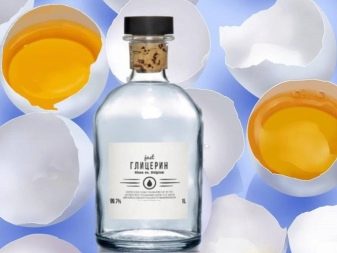
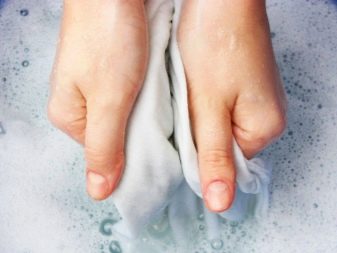
Cleaning tips for different fabrics
When choosing a suitable method for removing dirty stains, you need to take into account not only their origin, but also the type of fabric from which the tablecloth is made. For different materials, different washing temperatures and different detergents (purchased or traditional) are suitable.
Natural silk tablecloths look very beautiful and elegant. Silk is a delicate material that requires an appropriate washing cycle in the machine. Alkalis cannot be used for cleaning such things. One type of acetate silk fabric should not be washed with vinegar.
It is also better not to use whitening agents and any stain removers.
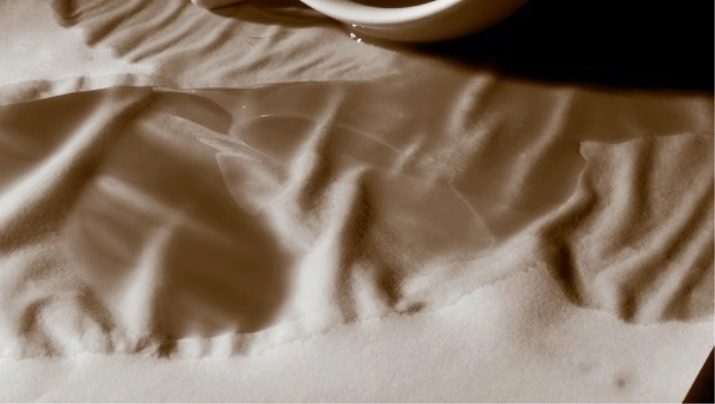
Detergents can leave streaks on silk, so you need to be very careful with them. It is better to put cotton or cheesecloth on the seamy side. To avoid streaks, the fabric around the stains can be soaked with water and sprinkled with talcum powder. Dirt can be wiped off with a cotton pad, moving from the edges to the center.
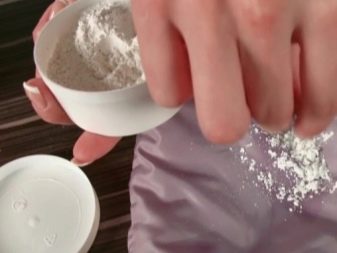
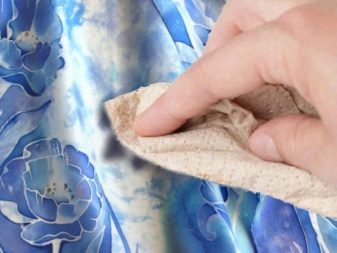
Linen tablecloths are very popular today. They are often placed on the table. Linen products absorb dirt very well, so they should be cleaned as soon as possible, without tightening.
The sooner cleaning starts, the easier it will be to remove the dirty stain.
Old stains from a linen tablecloth may be washed off with stain removers. Hydrogen peroxide can be additionally added to such compositions. The last specified means is especially effective if the processing of snow-white fabric is carried out. For stained linen tablecloths, it is recommended to use a combination of soap and stain remover, but without peroxide.
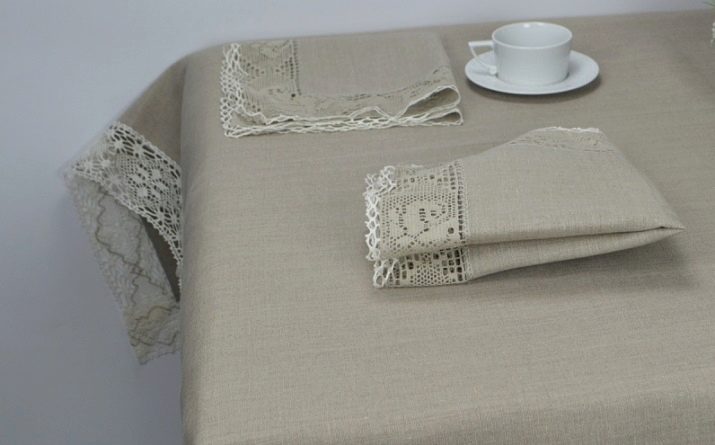
Beautiful tablecloths made from attractive materials such as tapestry or jacquard are very popular today. First, let's take a look at how modern jacquard products should be cleaned properly.
- If the jacquard tablecloth is sustained in light colors, it will need to be machine washed at a temperature not exceeding 90 degrees Celsius.
- If we are talking about colored materials, then for them it is necessary to set a temperature regime of 40 degrees. It is advisable to wash such things separately from light ones.
- Jacquard tablecloths must be ironed. This should be done in steaming mode.
- Stains should be removed from a jacquard product immediately, without postponing this process until later.
- If red wine stains appear on such material, you can use a solution of potassium permanganate or peroxide. Coffee stains from jacquard can be removed with glycerin. It is applied for 2 hours and then removed with warm water.
- When cleaning a jacquard tablecloth, in no case should you use bleach. Oxygen compounds are more suitable.
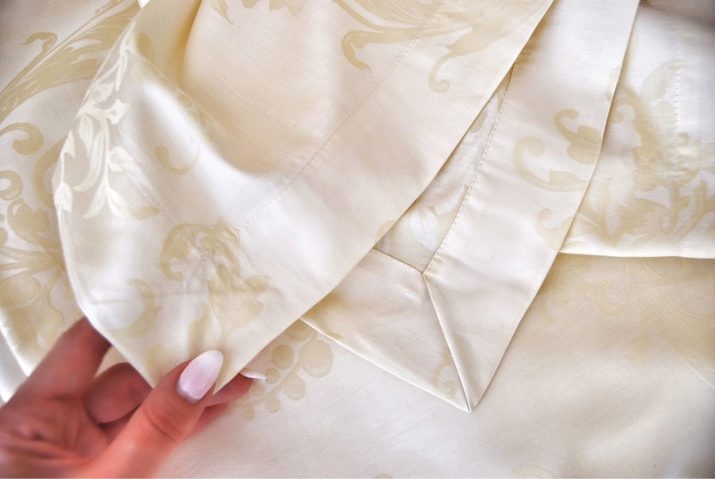
Modern tapestry tablecloths look gorgeous. Let's look at the main features of cleaning them from stains.
- Tapestry items immediately attract a lot of attention, so you have to be especially careful about their cleanliness. To clean these tablecloths, use only delicate brushes.
- To effectively remove stains from the tapestry tablecloth, the garment should be rinsed in warm liquid. Before using the purchased detergent, it is better to test it first by dropping it on the wrong side of the product.
- If the item is washed by hand, you should not rub it too much, so as not to spoil the tapestry structure.
- Tapestry tablecloths are not allowed to be wrung out or dried in direct sunlight, since such actions will cause the product to lose its original attractive appearance.
- If the tapestry tablecloth is washed at home, it is necessary to set an extremely delicate mode.
- If such a product gets stains of coffee, tea, various sauces and products, then it is advisable not to resort to all sorts of experiments. The best solution would be to take the product to dry cleaning, where it will be removed from contamination without spoiling the condition and quality of the tapestry.
